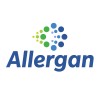
Intraoperative Nerve Monitoring During Robot-assisted Laparoscopic Prostatectomy
Urinary IncontinenceErectile DysfunctionThe purpose of this study is to determine whether the use of intraoperative nerve monitoring during robotic-assisted laparoscopic prostatectomy surgery improves post-surgery urinary continence and erectile function.

Tactile Imaging and Electromyography
Urinary IncontinenceOveractive BladderUrinary incontinence (UI) and overactive bladder (OAB) in women has high prevalence which is increasing with the age. In adults aged 40 and older in the US demonstrated prevalence rate of 27.2% among man and 43.1% among women, respectively. Urine Incontinence was reported to affect 15% of women ages 40 to 49, 25% ages 60 to 69, and 38% of women age 80 and older.

AMS AdVance and AdVance XP Male Sling Systems for the Treatment of Stress Urinary Incontinence Following...
Urinary IncontinenceStress1 moreA single-center retrospective chart review of AdVance and AdVance XP subject data, combined with prospective follow-up of the same subjects to confirm continence, adverse event, and quality of life status. This study includes patients previously implanted with an AdVance or AdVance XP male sling.

Evaluation of Nocturnal Enuresis and Barriers to Treatment Among Pediatric Patients With Sickle...
Sickle Cell DiseasePediatric patients with sickle cell disease are at greater risk for exhibiting nocturnal enuresis (bedwetting) compared to the general population. This increased risk has been attributed to a decreased ability to concentrate urine caused by sickling-induced nephropathy. The sociodemographic, psychosocial, and medical factors associated with nocturnal enuresis are not well defined. In addition, the impact of these behaviors on emotional and behavioral functioning, along with health-related quality of life are not clear. Despite the availability of evidence-based interventions for nocturnal enuresis, very few families with a child with sickle cell disease have utilized these methods. The reasons for this underutilization of interventions are not clear.

Evaluation of Safety and Efficacy of Botulinum Toxin Type A (BOTOX®) to Treat Urinary Incontinence...
Urinary IncontinenceUrinary Bladder1 moreThis study is a Post-Marketing Surveillance study in Korea to evaluate the safety and efficacy of botulinum toxin Type A to treat urinary incontinence in patients with neurogenic detrusor overactivity (NDO) or overactive bladder (OAB) not adequately controlled by anticholinergic drugs.

Integrating Targeted MedlinePlus Health Prescriptions Into Clinic Practice Workflow
Allergic RhinitisAsthma20 moreThe specific aim of this proposed project is to implement a standard process for integrating MedlinePlus health information prescriptions into the clinic workflow. Hypothesis 1: Individuals in the intervention group who receive tailored email health information with provider selected MedlinePlus links and added commentary for patient specific conditions will be more likely to seek information / use MedlinePlus compared with individuals in the control group. Hypothesis 2: Individuals in the intervention group who receive tailored email health information with provider selected MedlinePlus links and added commentary for patient specific conditions will be more satisfied with the information received compared with individuals in the control group.

Bladder Antimuscarinic Medication and Accidental Bowel Leakage
Urinary IncontinenceUrge1 moreThis observational research study will examine whether a medication known as darifenacin (Enablex ®) used for urgency urinary incontinence (UUI) also helps to improve fecal incontinence symptoms. Darifenacin is FDA approved for UUI, but is not FDA approved for fecal incontinence or specifically for dual incontinence (treatment of urinary incontinence and fecal incontinence at the same time). If participants are eligible for this study, they will have had symptoms of bothersome urgency urinary incontinence and fecal incontinence, and have decided to try medication for urgency urinary incontinence. Darifenacin (Enablex ®) is an oral medication which relaxes the bladder muscle to help prevent urgency urinary leakage. It is commonly used to treat overactive bladder and urgency urinary leakage. There is some evidence that this medication may also help with fecal incontinence by slowing the gut and preventing loose stools. Investigators are planning to enroll approximately 30 patients who have both UUI and fecal incontinence and who choose medical treatment as a part of their standard care.

Sonographic Evaluation of the Single-incision Needleless (Contasure-needleless®) Mini-sling Placement...
Urinary Incontinence,StressTransperineal ultrasonography is gaining importance in preoperative and postoperative evaluation of the patient with urinary incontinence with allowing well detailed information about the anterior compartment. There is little evidence that transperineal sonography can aid surgeons to predict the success or failure after mid-urethral slings. We aimed to investigate the efficacy of sonography in mini-sling operations to predict the success or failure.

e-GAB: Electronic Geriatric Assessment Bundle: Development of an Arabic Self-administered Android...
Health Services for the AgedFrailty5 moreThe aim of this study is to design and assess the accuracy of administering the electronic Geriatric Assessment Bundle (e-GAB) compared to geriatrician performed comprehensive geriatric assessment (CGA) in a group of Egyptian elderly. The development of an Arabic software platform for CGA can improve the clinical practice by providing a valid user friendly tool to collect and analyze data for geriatric patients attending non- Geriatric health care service.

An Investigation With an Intra-vaginal Device for Stress Urinary Incontinence
Stress Urinary IncontinenceThis is a prospective, randomized, controlled, two-armed multi-center pre-market trial. Nighty-six (96) subjects will be recruited at sites in Sweden. Patients with diagnosed stress urinary incontinence (SUI), will be considered as potential study participants. After written informed consent has been acquired, a medical and surgical history, a physical examination (including pelvic examination), and a confirmation of the diagnosis of SUI will be performed, followed by a confirmation of the inclusion/exclusion criteria. The study subjects fulfilling all the eligibility criteria will thereafter be randomized 3:1 into either the TVS group or the standard of care (SoC) group.
